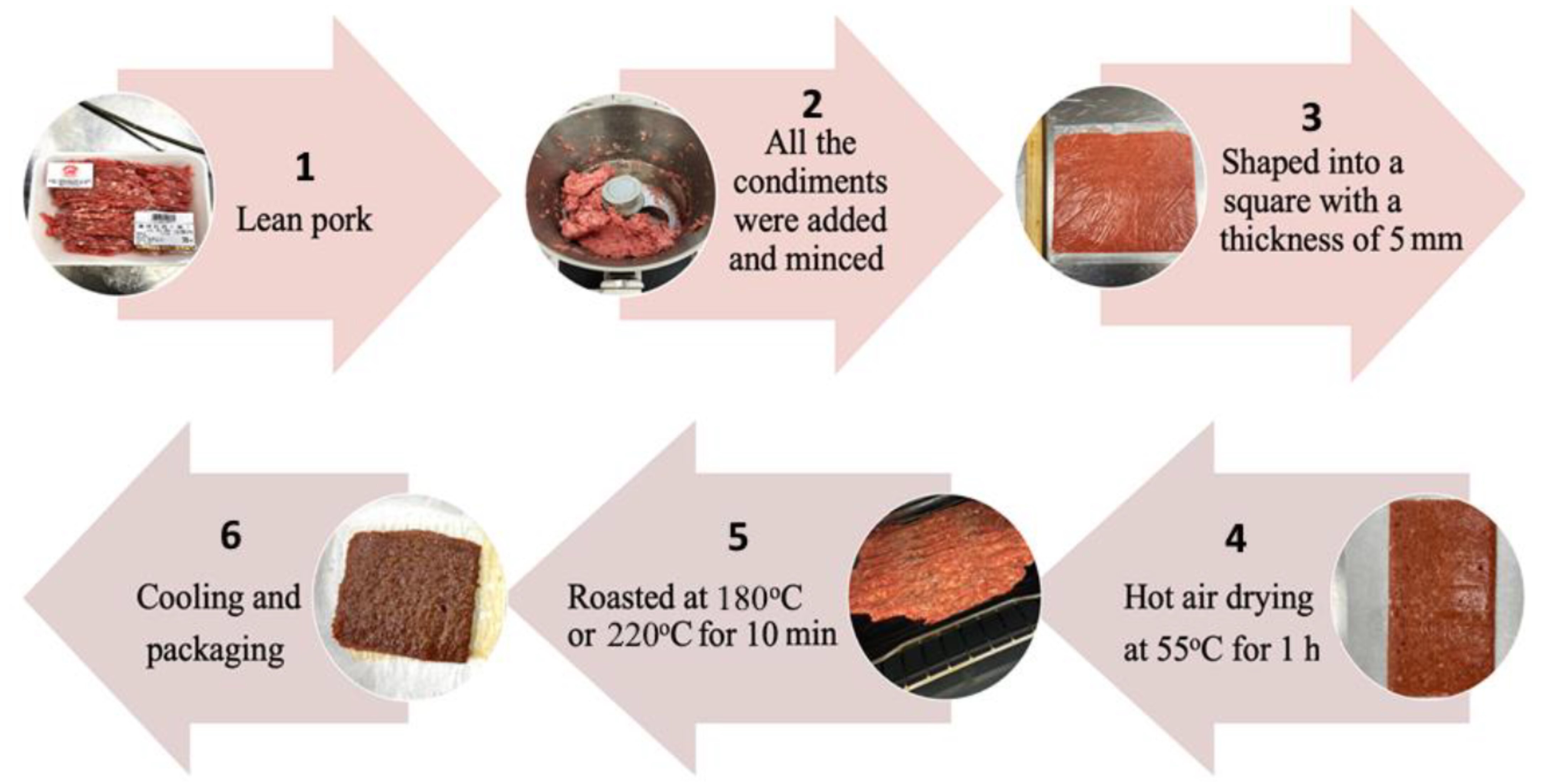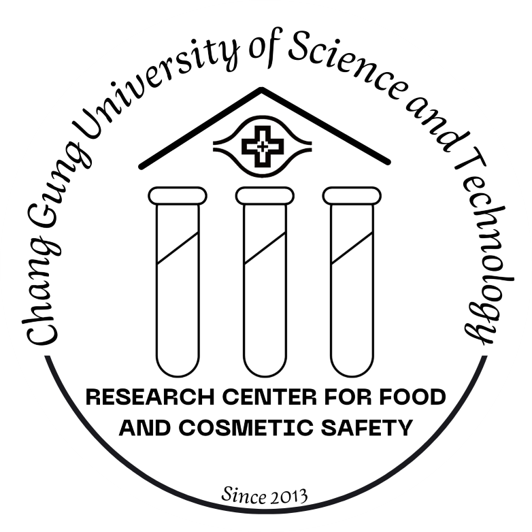Extraction of heterocyclic amines and polycyclic aromatic hydrocarbons from pork jerky and the effect of flavoring on formation and inhibition

圖文摘要說明
這張圖片以流程圖的形式展示了豬肉乾的製作步驟,從步驟 1 的精瘦豬肉開始,到步驟 2 加入所有調味料並絞碎,接著在步驟 3 中塑形成 5 毫米厚的方形。步驟 4 描述了在 55°C 下熱風乾燥 1 小時,然後在步驟 5 中於 180°C 或 220°C 下烘烤 10 分鐘。最後,步驟 6 顯示冷卻和包裝後的豬肉乾成品。這個流程圖旨在說明實驗中豬肉乾的製備過程,以便後續分析其中雜環胺 (HAs) 和多環芳烴 (PAHs) 的含量,並研究調味料和加工溫度對這些有害物質形成的影響。
Abstract
Heterocyclic amines (HAs) and polycyclic aromatic hydrocarbons (PAHs) are widely distributed in foods. This study aims to extract PAHs and HAs from pork jerky simultaneously by QuEChERS for analysis by GC-MS/MS and UPLC-MS/MS, respectively. Also, the effects of flavoring materials and processing temperature on the formation of PAHs and HAs were studied. Acetonitrile containing 1% acetic acid possessed the highest extraction efficiency, with high accuracy and precision being attained for HAs and PAHs. Pork jerky roasted at 220℃ generated a higher PAHs content than 180℃, but unaffected the HAs formation. Addition of sugar reduced formation of both HAs and PAHs during roasting, while soy sauce reduced some PAHs and promoted HAs formation. Incorporation of 0.5% curcuma or cinnamon powder inhibited HA formation with a more pronounced effect being shown by the latter, but neither inhibited PAH formation. The correlation between HA and PAH formation was assessed by principle component analysis.
Keywords:Heterocyclic amines (HAs); Polycyclic aromatic hydrocarbons (PAHs); Pork jerky; UPLC-MS/MS; GC-MS/MS; QuEChERS

